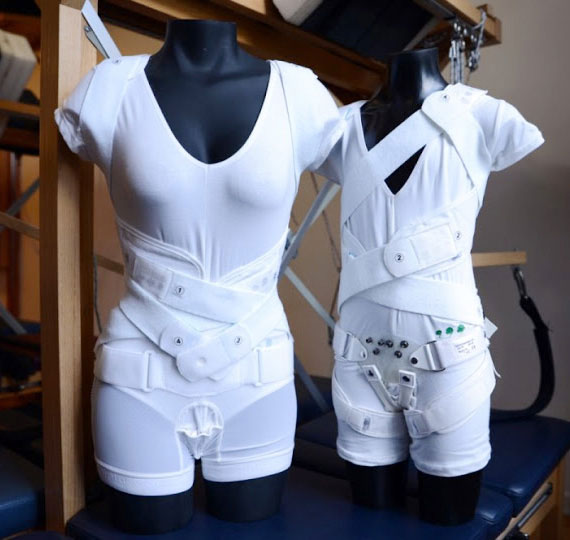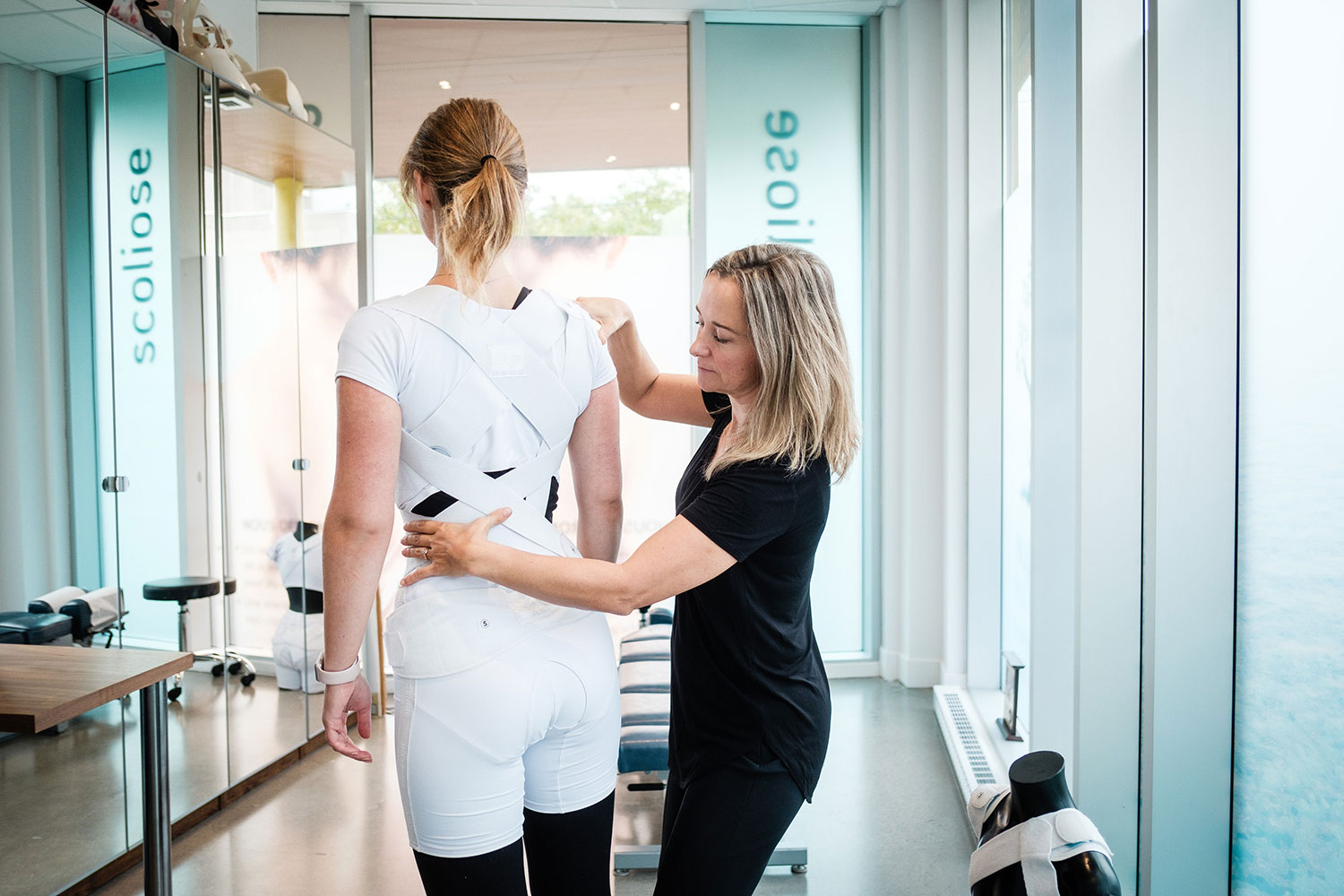First visit
Welcome to the SpineCor Clinic. Our specialized centre offers solutions for people of all ages to suffering from scoliosis or kyphosis. So as to familiarize you with our approach, here are the various steps of a first visit to our clinic.
ASSESSMENT
ASSESSMENT OF THE PATIENT’S OVERALL HEALTH CONDITION
Upon your first visit, we will ask you to fill out a questionnaire about your state of general health. Then we will proceed to assess your condition.
DETAILED ASSESSMENT INVOLVES:
- Providing or confirming a diagnosis of scoliosis or hyperkyphosis;
- Establishing its degree of severity;
- Elaborating a treatment plan.
CLINICAL ASSESSMENT INVOLVES:
- Detailed postural assessment;
- In the case of scoliosis, the spinal protuberance and rotation is measured using a scoliometer with the patient bending forward;
- An orthopaedic and neurological assessment when relevant.
Should any indications of scoliosis or hyperkyphosis be detected during the clinical assessment, x-rays will be required in order to confirm the diagnosis.
RADIOLOGICAL ASSESSMENT
Radiological assessment usually involves taking two x-rays of the entire spinal column—a lateral and frontal view.
A treatment plan is then proposed to the patient based on the results of the clinical and radiological assessments.
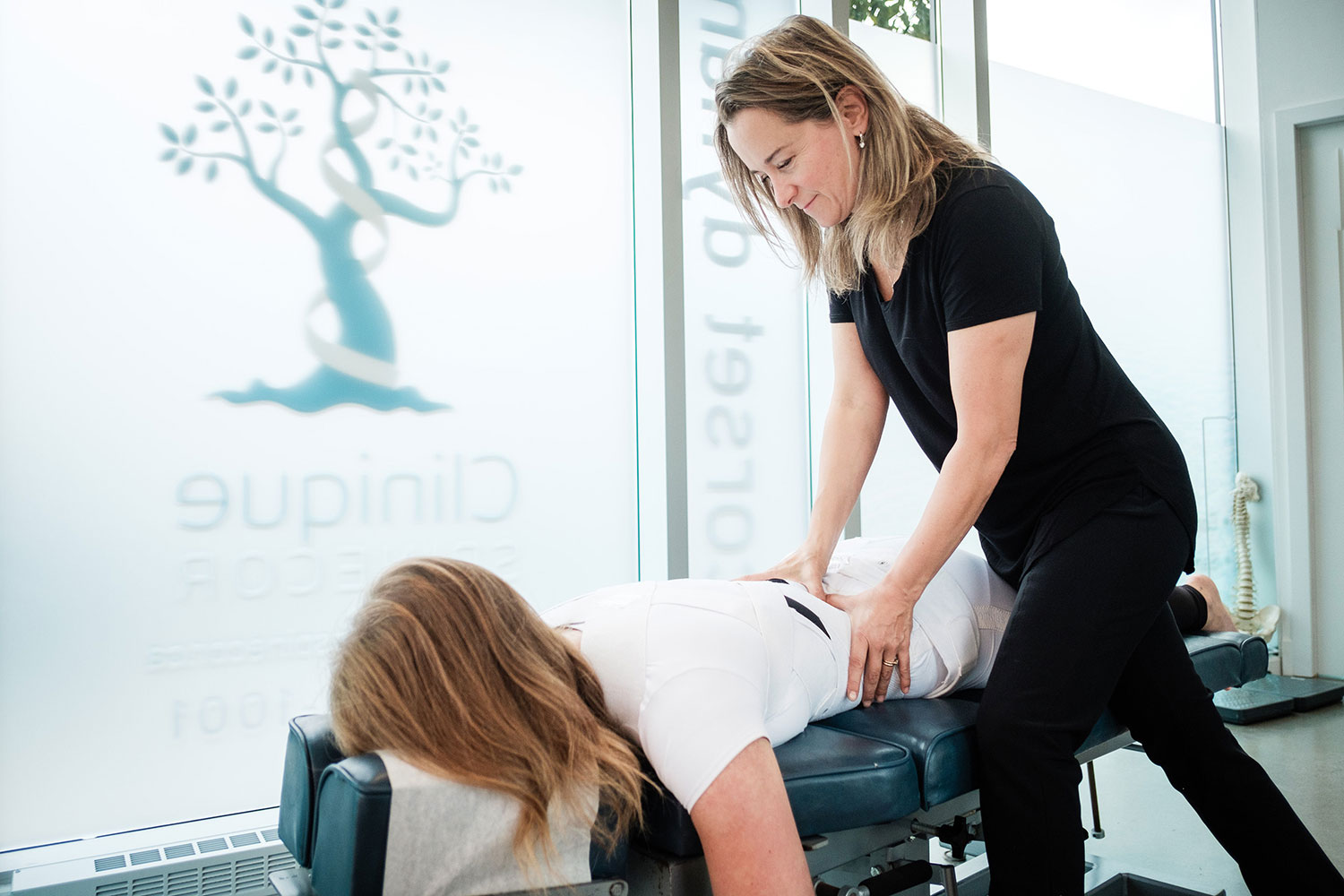
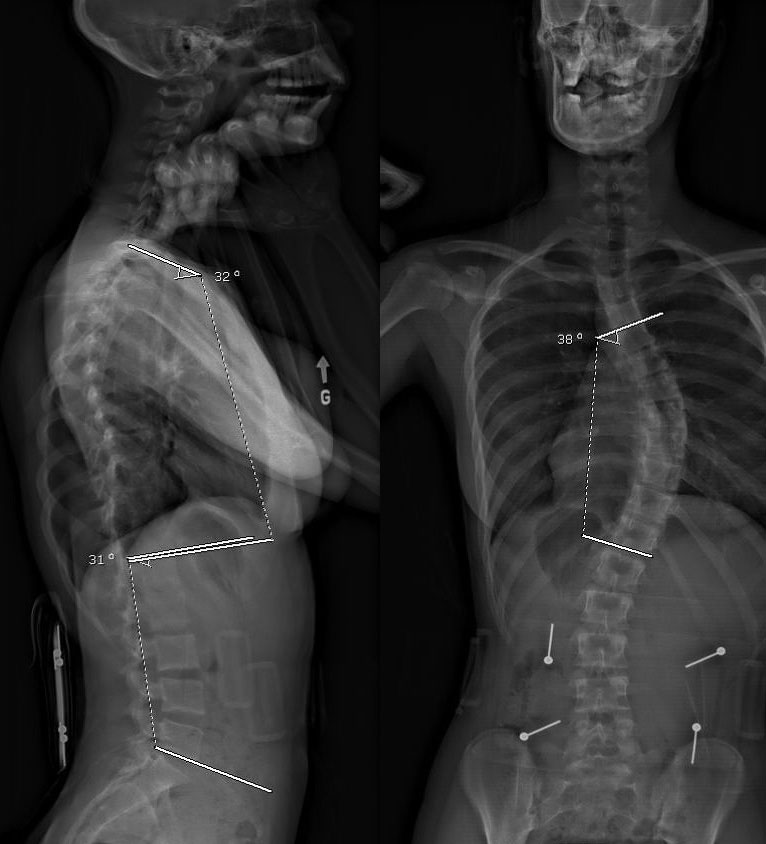
TREATMENT PLAN
The treatment plan may involve the following:
OBSERVATION
Therapeutic intervention may not be required for certain curves. Paediatric patient are frequently placed under observation with follow-up visits scheduled every three months or so to ensure that the curvature does not show any undue signs of progression.
Adult patients rarely undergo this step however, as they usually are in need of treatment by the time they decide to consult. Therapeutic intervention is usually recommended due to age-related potential for curvature progression.
EXERCISES
Generally, when the curvature is still slight (ex. Cobb angle of less than 15° in the case of scoliosis), specific exercises may be prescribed to the patient in order to help to slow curvature progression.
Recommendation of a brace
When curve abnormality in children or adolescents exceeds a certain threshold (Cobb angle of over 15° in the case of scoliosis), treatment using the SpineCor dynamic brace®is recommended to stabilize the curvature. In many cases, when optimal conditions are present (early intervention, slight curve, zero skeletal maturation), the brace may even lead to a reduction of the curve that will maintain itself after the treatment has ended.
In adults, treatment with the SpineCor® dynamic brace does not require a minimum or maximum curve angle, as most patients are seeking relief from their pain and to stabilize the abnormal curvature. It is important that patients be aware that it is not possible to definitely correct a scoliotic or kyphotic curve in physically mature adults; the proposed treatment focuses rather on slowing deterioration and relieving pain.
All SpineCor® braces must be prescribed by a medical doctor before fitting.
COMBINATION OF EXERCISES + BRACE
In certain cases and depending on the patient’s degree of motivation, exercises can be prescribed as well as the brace in order to maximize its effects.
SURGERY
If the degree of severity of the (paediatric) scoliosis or kyphosis goes beyond a given threshold, stabilization via a surgical procedure may become necessary, as curvature progression could eventually have serious adverse effects on the patient’s health.
The SpineCor Clinic works closely with orthopaedic surgeons to ensure joint follow-up of all patients being treated with the SpineCor® dynamic brace.
It is also possible to treat pain in adults having undergone surgical fusion at a younger age using the SpineCor® brace.
